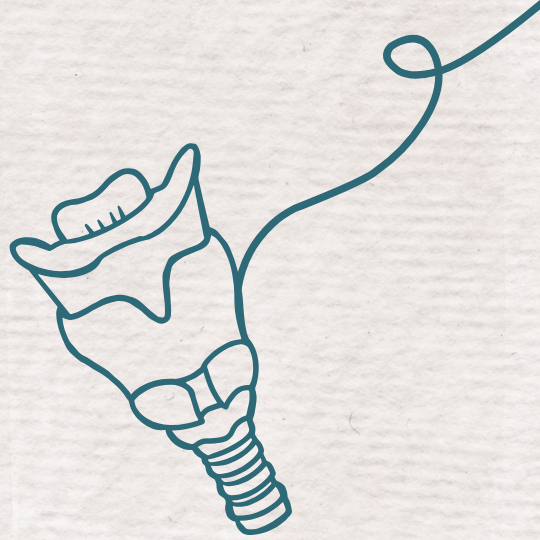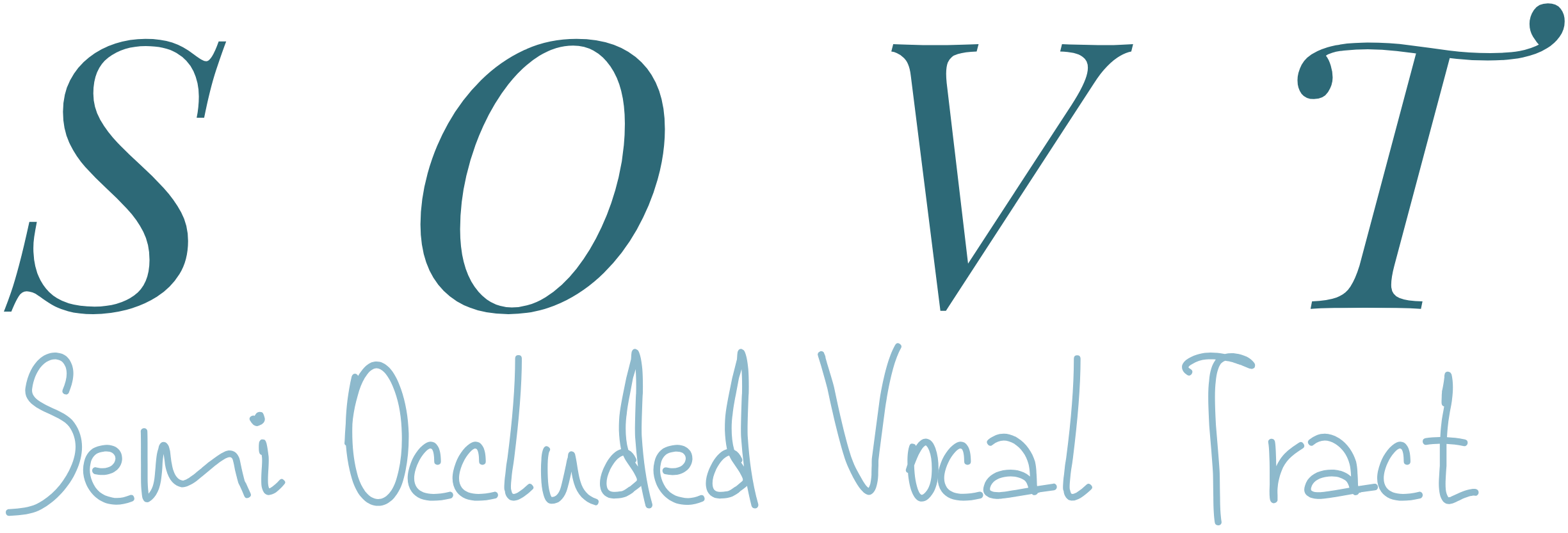Journal Entry: The Power of SOVT
Dear Virtuosi,
Have you ever had one of those days where your voice feels like it’s holding on by a thread?
Maybe you’ve just finished a marathon teaching day, a back-to-back gig weekend, or even just too many Zoom calls.
You sit in the car, or collapse on the couch, thinking… “My voice just doesn’t feel like mine.”
We’ve been there too. And it’s on those days—more than any other—that we reach for a tiny but mighty tool in our vocal wellness kit:
(Stay with us, it’s way less intimidating than it sounds.)
Whether you’ve used a straw, trilled your lips, or hissed like a kettle, you might already be doing SOVT.
But do you know why it works?
Or better yet—why it’s one of the most science-backed, singer-approved tools you can use for vocal longevity?
Let’s dive into what makes this technique so magical.
1. It reduces vocal fold collision.
This one’s a game-changer—especially for those of us who belt, speak for hours, or sing with intensity.
When we sing or speak, our vocal folds come together over and over again. That contact? It’s called collision force, and when it gets too strong, it leads to vocal fatigue, inflammation, or worse—injury.
SOVT exercises, like humming into a straw or doing a gentle lip trill, create back pressure in the vocal tract. That back pressure pushes gently against the vocal folds, reducing the intensity of that collision¹. It’s kind of like adding a shock absorber to your voice. Same effort, way less strain.
Honestly, on days when your voice feels "swollen" from overuse, even a minute of straw phonation feels like someone hit the reset button.
2. It improves your vocal efficiency.
Okay, let’s get nerdy (but just for a sec).
When you narrow part of the vocal tract—like by blowing into a straw or forming certain consonants—your mouth becomes a pressure chamber. That pressure helps balance your airflow and vocal fold vibration². Think of it like upgrading from a rickety bicycle to a smooth-riding e-bike. You’ll go further with less push.
For singers, this means easier belting, smoother transitions, and less chance of “pushing” your sound. For speakers or teachers, it means getting through your day without sounding like a croaky old toad by 4 p.m.
It’s not about singing less. It’s about singing smarter.
3. It helps regulate vibration and promotes recovery.
Now here’s the secret sauce: SOVT isn’t just for fixing a tired voice. It’s also ideal for prepping and protecting it.
The way SOVT supports vibration of the vocal folds helps promote a healthy mucosal wave (that beautiful ripple effect your folds need to phonate freely)³. Using oscillating SOVTs (like lip trills or straw bubbles) introduces little pulses of resistance that help regulate that wave—like a gentle tune-up, and not to mention the little massage it gives your throat!
Here at PS, we use straw work not just after singing, but as part of our daily warmup and cooldown ritual. And the difference? Huge.
When we talk about being sustainable as vocalists, we’re not just talking about gigs and money—we’re talking about keeping our instrument alive. Every day we care for our voice is a deposit into the vocal longevity bank.
Ready to Try It?
Start with what you’ve got—a straw and a cup of water is a great beginning. No need to overthink it. Gently bubble, breathe low, stay relaxed. Or explore fricatives like /z/ and /ʒ/ (zh) for a straw-free version. There’s no gold star for volume or high notes here—it’s all about connection, not performance.
So...
how should it feel?
?
So... how should it feel? ?
So… how should it feel?
SOVT should feel easy, soothing, and even a little bit satisfying. Like a sigh of relief for your voice. Your throat should feel open—not tight—and you should notice your neck, jaw, and tongue start to soften as your voice settles into the exercise. If you’re bubbling into water, you should feel a gentle, steady backpressure—but never strain.
What about puffed cheeks?
Puffed cheeks can actually be a good sign—it usually means you're not clenching the facial muscles to pressurise the airflow, and that's a win. A light cheek puff often shows you're allowing the back pressure to build naturally, rather than muscling through it. Just make sure no air is escaping from the corners of the mouth or through the nose. If it is, try repositioning the straw and keeping a soft seal at the lips.
When is it too much?
If you're forcing air, feeling tightness in the throat or chest, or losing control of airflow, that’s your signal to ease back. More pressure ≠ more benefit. In fact, too much resistance can actually create tension or disrupt healthy vocal fold vibration. If that’s happening, lighten your airflow, try a shallower water depth, or switch to a slightly wider straw.
Think of it like vocal Pilates:
Supportive, controlled, and grounded in awareness—not brute force.
Your voice deserves care as unique and intentional as your artistry. And SOVT? It’s one of the simplest, smartest ways to show it some love. So next time your voice feels “off,” or before your next vocal marathon—try giving it a moment of resistance… and breath.
You’ve got this, Virtuosi.
Until next time,
Performance Studios
Your Vocal Support Squad, onstage and off
Sources & Science
¹ Titze, I. R., & Verdolini Abbott, K. (2008). Vocology: The science and practice of voice habilitation. National Center for
Voice and Speech.
² Titze, I. R. (2006). Voice training and therapy with a semi-occluded vocal tract: Rationale and scientific underpinnings.
Journal of Speech, Language, and Hearing Research, 49(2), 448–459.
³ Cox, K. T., & Titze, I. R. (2022). The voice is free (after SOVT). Voice Is Free Publishing.
Pack, M. (n.d.). About the Voice Straw. Retrieved from https://voice-straw.com/pages/about-voice-straw
Naismith, M. L. (2022). SOVT and science-based tools for singers [Audio podcast]. A Voice and Beyond.
https://www.drmarissaleenaismith.com/087/








